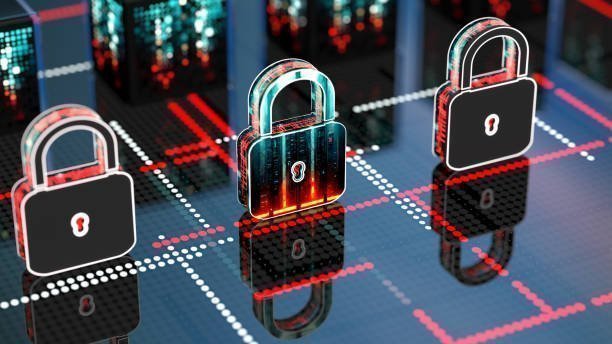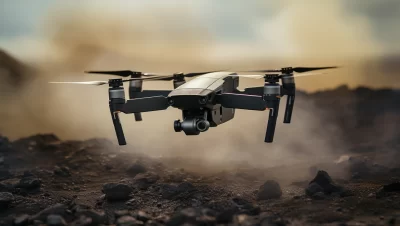Hey there! Are you as fascinated by drones as I am? You know, those incredible flying machines that seem to defy gravity and capture breathtaking aerial footage. But here’s the thing—I had a nagging question in the back of my mind: Can drones be tracked?
It’s a concern that many of us have, especially when it comes to privacy and security. So, if you’ve been pondering the same question, you’re in the right place.
Drones can be tracked. Due to advancements in technology, there are several methods and tools available to monitor and trace the movements of drones, ranging from radio frequency identification (RFID) and visual tracking systems to global navigation satellite systems (GNSS) and Wi-Fi/Bluetooth tracking.
In this article, we’ll uncover the different tracking technologies, discuss their strengths and limitations, and explore the regulations surrounding drone tracking.
By the time you finish reading, you’ll have a comprehensive understanding of the feasibility and methods of tracking drones. We’ll explore various contexts, including consumer and commercial use, government regulations, and the latest technological advancements.
Not only will you be well-informed about the available tracking technologies, but you’ll also have insights into the potential challenges and concerns associated with drone tracking.
So, let’s embark on this journey together and unlock the fascinating world of drone tracking!
Drone Tracking Technologies

Alright, let’s dive into the exciting world of drone tracking technologies! In this section, we’ll explore some of the key methods used to monitor and trace the movements of drones.
From GPS tracking to Radio Frequency Identification (RFID), visual tracking systems, and Wi-Fi or Bluetooth tracking, each technology has its own unique strengths and limitations.
So, fasten your seatbelt as we embark on this journey to uncover the fascinating ways drones can be tracked!
1. GPS Tracking
Introduction: Imagine having a virtual eye in the sky that can pinpoint the exact location of a drone at any given moment. That’s the power of GPS tracking! Global Positioning System (GPS) technology has revolutionized the way we navigate and track objects, and it’s no different for drones.
With GPS tracking, drones rely on a network of satellites to determine their precise location, altitude, and speed. This allows for accurate and real-time tracking of these unmanned aerial vehicles.
However, like any technology, GPS tracking has its own set of limitations and challenges that we’ll explore further.
How GPS Tracking Works for Drones
Just like the GPS in your car or smartphone, drones utilize a GPS receiver to receive signals from multiple satellites. By calculating the time it takes for signals to travel from the satellites to the drone, the GPS receiver can accurately determine the drone’s position in three-dimensional space.
This location data is then transmitted to the ground station, providing the operator with valuable information about the drone’s whereabouts.
Limitations and challenges of GPS tracking:
While GPS tracking is highly effective in open outdoor environments, it can face limitations in areas with poor satellite reception, such as dense urban environments or indoors. Additionally, GPS signals can be susceptible to interference, leading to potential inaccuracies in tracking.
It’s important to consider these limitations and explore complementary tracking technologies for more robust and reliable tracking solutions.
2. Radio Frequency Identification (RFID)
Ever wondered how drones can be identified and tracked without relying solely on satellite signals? Enter Radio Frequency Identification (RFID). This technology harnesses the power of radio waves to enable seamless drone tracking. With RFID, drones are equipped with small tags or transponders that emit unique radio signals, allowing for easy identification and tracking.
How RFID Works for Drone Tracking
Imagine each drone wearing its own tiny radio badge. That’s essentially what RFID does! Drones carry RFID tags that emit radio signals containing unique identification codes. These signals can be picked up by RFID readers or receivers, which are strategically placed in designated areas.
By capturing these signals, the location and movement of drones can be accurately tracked, even in GPS-challenged environments.
Pros and Cons of RFID Tracking
RFID tracking offers advantages such as real-time identification, accurate tracking within the coverage area, and the ability to track drones in areas where GPS signals may be unreliable or unavailable.
However, RFID tracking typically requires close proximity between the drones and the RFID receivers, making it more suitable for localized tracking scenarios. It’s important to weigh the benefits and limitations of RFID tracking when considering its implementation.
3. Visual Tracking Systems

When it comes to tracking objects, our eyes are invaluable assets. The same principle applies to tracking drones. Visual tracking systems leverage advanced camera technologies to monitor and trace the movements of drones, offering a reliable and visually intuitive tracking solution.
Camera-Based Tracking Solutions
Imagine a network of cameras scanning the sky, keeping a watchful eye on drones as they soar through the air. Visual tracking systems employ high-resolution cameras that capture images or videos of drones in real-time. Using sophisticated computer vision algorithms, these systems can detect, track, and predict the path of drones based on their visual signatures.
Advantages and Limitations of Visual Tracking
Visual tracking systems offer benefits like accurate real-time tracking, visual confirmation of drone presence, and the ability to monitor multiple drones simultaneously.
However, factors like lighting conditions, drone size, and speed can impact the effectiveness of visual tracking. Additionally, visual tracking systems may face challenges in scenarios where drones are obstructed by buildings, trees, or adverse weather conditions.
4. Wi-Fi and Bluetooth Tracking
You may already be familiar with Wi-Fi and Bluetooth as wireless communication technologies, but did you know they can also be utilized for drone tracking? Wi-Fi and Bluetooth signals offer unique opportunities to track drones in close proximity and provide valuable insights into their movements.
How Wi-Fi and Bluetooth Signals are Used for Drone Tracking
Think of Wi-Fi and Bluetooth signals as invisible threads connecting drones to the tracking system. By detecting and analyzing the strength and characteristics of Wi-Fi and Bluetooth signals emitted by drones, tracking systems can estimate their proximity and movement patterns and even gather additional data such as signal strength and connection quality.
This allows for effective tracking and monitoring in indoor environments or areas with dense Wi-Fi or Bluetooth coverage.
Challenges and Accuracy of RF and Wi-Fi Tracking:
While Wi-Fi and Bluetooth tracking can be effective in localized areas, they may face challenges in environments with numerous signals or interference. Factors like signal propagation, signal reflections, and signal strength variations can affect the accuracy of tracking.
Therefore, it’s essential to carefully evaluate these factors and consider the specific use cases when employing RF and Wi-Fi tracking methods.
Also Read: Can Drones Be Hacked?
Drone Tracking in Practice

Now that we have explored the different drone tracking technologies, let’s take a closer look at how these technologies are applied in real-world scenarios.
In this section, we’ll delve into the practical applications of drone tracking, ranging from government and military use to commercial and industrial sectors as well as consumer applications. Get ready to discover the fascinating ways in which drone tracking is making a tangible impact in various domains!
A. Government and Military Applications
Introduction: When it comes to drone tracking, government, and military entities have been at the forefront of harnessing the power of these technologies. Let’s uncover how drone tracking plays a vital role in enhancing security, surveillance, and military operations.
1. Military use of Drone Tracking Technologies
Imagine a military operation where drones are used for reconnaissance or even combat purposes. Drone tracking technologies enable military personnel to precisely monitor and track both friendly and hostile drones in real-time. This capability empowers military forces to gather critical intelligence, assess threats, and swiftly respond to potential security breaches.
2. Surveillance and Security Applications
Drone tracking is not limited to military applications alone. Government agencies responsible for public safety and security also utilize these technologies to monitor airspace, detect unauthorized drone activity near sensitive areas, and ensure the safety of the public.
By employing advanced tracking systems, governments can maintain situational awareness and effectively respond to security concerns.
B. Commercial and Industrial Use Cases
Introduction: In the realm of commerce and industry, drone tracking opens up a world of possibilities for efficiency, productivity, and safety. Let’s explore some of the exciting applications in these sectors.
1. Drone delivery Services and Tracking
Imagine receiving a package delivered to your doorstep by a drone. Companies like Amazon and other innovative startups are exploring the use of drones for delivery purposes. Drone tracking technologies play a crucial role in ensuring the safe and reliable delivery of packages.
By tracking the drones in real-time, companies can monitor the progress of deliveries, optimize routes, and enhance the overall efficiency of the delivery process.
2. Monitoring and Inspection Applications
Industries such as agriculture, construction, and infrastructure maintenance benefit from using drones for monitoring and inspection tasks. Drone tracking allows for effective oversight of large areas, such as crop fields or construction sites.
Real-time tracking data assists in identifying potential issues, monitoring progress, and ensuring adherence to safety regulations. With the help of tracking technologies, industries can streamline operations, improve decision-making, and reduce costs.
C. Consumer Applications
Introduction: Drone tracking is not limited to the government and commercial sectors. Even recreational drone enthusiasts can benefit from these technologies. Let’s explore how tracking comes into play for individual consumers.
1. Hobbyist Drone Tracking Solutions
Imagine flying your drone in a park or capturing stunning aerial footage. Hobbyist drone tracking solutions enable enthusiasts to keep tabs on their drones, ensuring they don’t fly too far or get lost. By utilizing GPS or other tracking technologies, hobbyists can monitor their drone’s location, speed, and altitude, providing an added layer of safety and peace of mind.
2. Safety and Privacy Implications for Recreational Drone Users
As drones become more prevalent among hobbyists, safety and privacy concerns arise. Drone tracking technologies help address these concerns by allowing authorities and responsible drone users to track and identify drones in case of any incidents or violations. This not only enhances safety but also promotes responsible drone use and respects privacy boundaries.
Government Regulations and Tracking

In order to ensure safe and responsible drone operations, governments around the world have implemented regulatory frameworks that include provisions for drone tracking.
In this section, we will explore the regulatory landscape and mandates for drone identification and tracking. Let’s dive into the world of government regulations and their impact on drone tracking.
Regulatory Frameworks for Drone Tracking
To establish a comprehensive framework for drone tracking, regulatory authorities have taken proactive steps to enforce rules and guidelines. Let’s take a closer look at two prominent regulatory bodies and their role in shaping the landscape of drone tracking.
1. Federal Aviation Administration (FAA) Regulations in the United States
In the United States, the Federal Aviation Administration (FAA) plays a crucial role in regulating drone operations. The FAA has implemented regulations that emphasize the importance of drone tracking and identification for safety and security purposes.
These regulations require drone operators to comply with specific tracking and identification requirements, ensuring that drones can be monitored and traced when necessary. By enforcing these regulations, the FAA aims to promote responsible drone use and mitigate potential risks.
2. International Civil Aviation Organization (ICAO) Guidelines
On the global stage, the International Civil Aviation Organization (ICAO) provides guidelines and standards for member states to adopt in the field of aviation.
Recognizing the rapid growth of drone technology, the ICAO has developed guidelines that address the need for drone identification and tracking. These guidelines promote harmonization among countries, ensuring a consistent approach to drone tracking across borders.
By following the ICAO guidelines, countries can enhance their airspace management systems and facilitate safe drone operations on an international scale.
Mandates for Drone Identification and Tracking
Introduction: To enhance safety and security in the airspace, regulatory bodies have introduced mandates for drone identification and tracking. Let’s explore the key aspects of these mandates and the challenges associated with their implementation.
1. Remote ID Requirements
One of the key mandates in drone tracking is the implementation of remote ID systems. Remote ID enables real-time identification and tracking of drones, providing crucial information about the operator and the drone itself.
This technology allows authorities to quickly identify any drones operating in restricted areas or involved in unauthorized activities. By implementing remote ID requirements, governments aim to improve situational awareness, enforce airspace regulations, and enhance public safety.
2. Implementation Challenges and Considerations
While the concept of drone identification and tracking is essential for safety and security, its implementation poses certain challenges. One of the primary considerations is the interoperability of tracking systems across different drone models and manufacturers.
Ensuring compatibility and standardization of tracking technologies is crucial for seamless integration and effective tracking.
Additionally, privacy concerns related to the collection and storage of tracking data must be carefully addressed to maintain a balance between public safety and individual privacy rights.
Privacy and Security Concerns

Introduction: As drone tracking technologies continue to evolve, it is essential to address the privacy and security concerns associated with these advancements.
In this section, we will explore the delicate balance between drone tracking and privacy rights, as well as the measures taken to ensure data security and protection. Let’s dive into the important considerations surrounding privacy and security in the realm of drone tracking.
Balancing Drone Tracking with Privacy Rights
While drone tracking provides valuable benefits in terms of safety and accountability, it is crucial to strike a balance between tracking capabilities and individuals’ privacy rights.
Striking this balance requires implementing clear regulations and guidelines that outline the permissible use of tracking technologies while safeguarding privacy.
It is important to establish transparent processes for obtaining consent and ensuring that tracking activities are conducted within the bounds of applicable laws.
By incorporating privacy-by-design principles, we can mitigate potential privacy concerns and foster responsible and ethical drone tracking practices.
Data Security and Protection Measures
Introduction: In addition to addressing privacy concerns, robust data security and protection measures are imperative to maintain the integrity and confidentiality of drone tracking data. Let’s explore some key measures implemented to safeguard data in the context of drone tracking.
1. Encryption and Secure Communication Protocols
To protect the data transmitted between drones and tracking systems, encryption techniques, and secure communication protocols are employed.
These technologies ensure that the information exchanged during tracking operations remains confidential and cannot be intercepted or tampered with by unauthorized parties.
By implementing strong encryption algorithms and adhering to industry best practices, the privacy and security of tracking data can be upheld.
2. Access Control and Authorization Frameworks
Controlling access to drone tracking data is essential to prevent unauthorized individuals from gaining sensitive information. Access control and authorization frameworks are established to regulate who can access, view, and manipulate the tracking data.
Implementing strict authentication mechanisms, role-based access controls, and audit trails ensures that only authorized personnel can access and use the data for legitimate purposes.
These measures reduce the risk of data breaches and the unauthorized use of tracking information.
As drone tracking technologies continue to advance, it is vital to address the privacy and security concerns associated with them. Striking a balance between tracking capabilities and privacy rights, along with implementing robust data security measures, is essential for fostering responsible and trustworthy drone tracking practices.
By embracing privacy-by-design principles and employing state-of-the-art security measures, we can ensure that drone tracking is conducted ethically and securely while respecting individuals’ privacy rights.
Challenges and Future Developments

Introduction: In the dynamic world of drone tracking, there are various challenges that need to be addressed to ensure its effectiveness and future advancements.
In this section, we will delve into the technical challenges faced in tracking drones, policy and regulatory considerations, and exciting future developments in the field. Let’s explore the obstacles and possibilities that lie ahead in the realm of drone tracking.
Technical Challenges
Introduction: As drone technology continues to evolve at a rapid pace, tracking these unmanned aerial systems poses several technical challenges. Let’s take a closer look at some of these challenges and their impact on drone tracking.
1. Evolving Drone Technology and its Impact on Tracking
With the constant innovation and advancements in drone technology, tracking systems must adapt to keep up with these changes. Newer drones are equipped with advanced capabilities such as improved maneuverability, autonomous flight, and smaller form factors.
Tracking these agile and sophisticated drones requires the development of more sophisticated tracking technologies that can effectively keep up with their capabilities.
2. Interference and Signal Jamming Issues
One of the challenges in drone tracking is the potential for interference or signal jamming. Malicious actors may attempt to disrupt tracking systems by jamming or interfering with the signals used for tracking.
Such interference can hinder the accuracy and reliability of the tracking process. Addressing this challenge requires the development of robust anti-jamming techniques and secure communication protocols to ensure uninterrupted tracking capabilities.
Policy and Regulatory Challenges
Introduction: Alongside the technical challenges, policy and regulatory considerations play a significant role in the effective implementation of drone tracking systems. Let’s explore some of the key policy and regulatory challenges in the realm of drone tracking.
1. International Coordination and Standardization
Drone tracking operates on a global scale, and harmonizing policies and regulations across different jurisdictions are crucial.
Achieving international coordination and standardization can help facilitate seamless tracking operations and foster interoperability between different tracking systems.
Collaboration between countries, regulatory bodies, and industry stakeholders is essential to address the complexities arising from cross-border operations and ensure consistent tracking practices.
2. Balancing privacy and Security Concerns
The intersection of drone tracking and privacy rights raises important ethical considerations. Striking a balance between effective tracking for safety and security purposes while respecting privacy rights is a challenge.
Implementing robust privacy safeguards, clear guidelines, and transparent processes for data collection, storage, and use is essential.
Finding the right balance between privacy and security requires ongoing dialogue, collaboration, and the involvement of relevant stakeholders.
Future Developments in Drone Tracking:
The future of drone tracking holds great potential for advancements in technology and innovative approaches. Let’s explore some exciting developments that can shape the future of drone tracking.
1. Advances in Tracking Technologies
The field of drone tracking is continuously evolving, and we can anticipate significant advancements in tracking technologies.
This includes the development of more accurate and reliable tracking systems using advanced sensors, machine vision, and advanced algorithms. These technologies will enhance the precision and efficiency of drone tracking, enabling better situational awareness and safety.
2. Integration with Artificial Intelligence and Machine Learning
The integration of artificial intelligence (AI) and machine learning (ML) holds immense promise for drone tracking. AI and ML algorithms can analyze vast amounts of tracking data in real time, enabling faster and more accurate identification and tracking of drones.
These technologies can help automate the tracking process, improve anomaly detection, and enhance the overall effectiveness of drone tracking systems.
As drone tracking continues to advance, it is crucial to address the technical, policy, and regulatory challenges that arise.
Overcoming these challenges requires collaboration, innovation, and a commitment to striking the right balance between effective tracking and safeguarding privacy and security. With ongoing advancements in technology and the integration of AI and ML, the future of drone tracking
Final Thoughts: Can Drones Be Tracked?

As we near the end of our exploration into the world of drone tracking, it’s important to reflect on the key points discussed and the significance of effective drone tracking systems.
In this conclusion, we will summarize the main ideas covered, emphasize the importance of robust tracking capabilities, highlight the potential impact on various sectors and society, and emphasize the ongoing need for research and development in the field.
Summary of Key Points Discussed
Throughout this article, we have delved into the fascinating realm of drone tracking. We explored the question of whether drones can be tracked and uncovered a multitude of technologies and methods employed for this purpose.
From GPS tracking and RFID to visual tracking systems and Wi-Fi/Bluetooth tracking, each approach has its advantages and limitations. We also examined the practical applications of drone tracking in government and military operations, commercial and industrial use cases, and consumer scenarios.
Importance of Effective Drone Tracking Systems
The importance of effective drone tracking systems cannot be overstated. In an era where drones are increasingly prevalent, ensuring their safe and responsible use is paramount.
By tracking drones, we can monitor their movements, identify unauthorized or potentially malicious activities, and maintain a secure airspace environment. Effective tracking is crucial for safeguarding public safety, protecting critical infrastructure, and ensuring compliance with regulations.
Potential Impact on Various Sectors and Society as a Whole
The impact of robust drone tracking extends beyond the realms of safety and security.
In the commercial and industrial sectors, tracking systems enable efficient drone delivery services, facilitate monitoring and inspection operations, and contribute to streamlined logistical processes.
In the consumer space, tracking solutions empower hobbyist drone enthusiasts while raising important questions about safety and privacy. Embracing drone tracking technology has the potential to revolutionize industries and enhance our everyday lives.
Need for Ongoing Research and Development in Drone Tracking
As we conclude our exploration of drone tracking, it is crucial to acknowledge the need for continuous research and development in this field.
Technology evolves rapidly, and with it, new challenges and opportunities arise. We must invest in improving tracking technologies, refining regulations, and addressing privacy and security concerns.
Ongoing collaboration between industry, regulators, and researchers will fuel innovation, enabling us to stay ahead of emerging threats and harness the full potential of drone tracking.
In conclusion, the ability to track drones is a vital aspect of ensuring their responsible and secure integration into our airspace. We have witnessed the progress made in tracking technologies, their practical applications in various sectors, and the associated challenges.
By embracing effective tracking systems, we can navigate the dynamic landscape of drone usage while fostering safety, security, and societal benefits. As we move forward, let us continue to explore, innovate, and refine our understanding of drone tracking to shape a future where drones coexist harmoniously with society.










